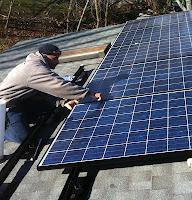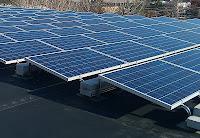This is a common feeling with home owners who really like the idea of installing a solar system - but unless you live on Mars, you'd know by now that the most common location for a solar Photovoltaic system mount is on the roof of the property. The second most common location is on the ground for those with a little space to spare.Within these two basic types are different designs/techniques of installation that depend on the clients needs and property style. Lets look at the roof mounts in part one of this blog update:
Roof Mounts: This is when the solar system is installed on the roof of the property. The system is usually installed on the south facing side of the roof for maximum solar exposure - we will discuss this in detail in upcoming blog updates. The panels are either aligned following the original slope of the roof or with the use of specified racks that help provide proper sloping or pitching for the panels. There are two types of roof mounts depending on the type of roof surface:
 1) Pitched 'roof' mounts: Panels are installed following the original pitch of the roof. Specific non-penetrating racks are used in most cases to avoid 'voiding' roof warranty or causing future leaks. These racks are usually fixed and set the angle at which the panels are held.
1) Pitched 'roof' mounts: Panels are installed following the original pitch of the roof. Specific non-penetrating racks are used in most cases to avoid 'voiding' roof warranty or causing future leaks. These racks are usually fixed and set the angle at which the panels are held. - Ballasted mounts: Commonly used on flat and wide roof surfaces. The design is engineered to secure or weigh down the array without any penetration. A support bracket connected to a wind deflector (last row) and a ballast pan, holds the ballast and the panels. It is connected to the next row by a 'connect tube'.
- Ballasted mounts: Commonly used on flat and wide roof surfaces. The design is engineered to secure or weigh down the array without any penetration. A support bracket connected to a wind deflector (last row) and a ballast pan, holds the ballast and the panels. It is connected to the next row by a 'connect tube'. We will look at ground mounts in the next blog update. They are are very interesting and provide a lot of possibilities for the installer and client to be creative.
